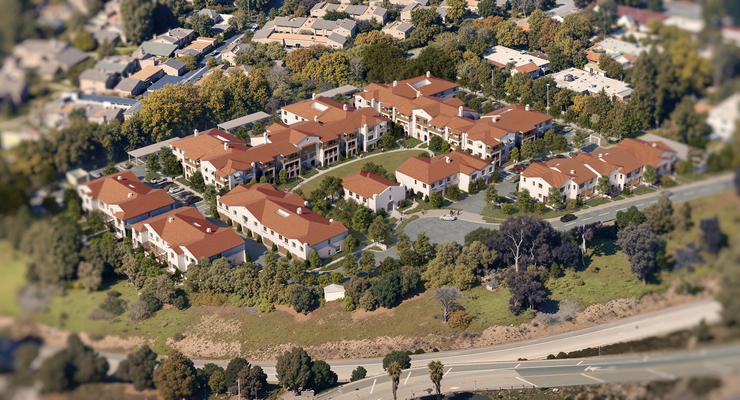Altadena Now is published daily and will host archives of Timothy Rutt's Altadena blog and his later Altadena Point sites.
Altadena Now encourages solicitation of events information, news items, announcements, photographs and videos.
Please email to: Editor@Altadena-Now.com
- James Macpherson, Editor
- Candice Merrill, Events
- Megan Hole, Lifestyles
- David Alvarado, Advertising


Thursday, July 24, 2025
School District Open House Discusses 110-Unit Workforce Housing Development on Former Roosevelt Elementary Campus
By EDDIE RIVERA

[Pasadena Unified School District image]
First public open house draws nearly 100 hopeful PUSD employees and staff members, along with concerned local homeowners
The Pasadena Unified School District is moving forward with plans to transform the closed Roosevelt Elementary School campus into a 110-unit workforce housing development, with district officials citing staff recruitment and retention as primary drivers for the project.
The District held its first community open house for the project on Wednesday evening for nearly 100 people in a sweltering Arroyo Room at the Brookside Golf Club, where the air conditioning had just failed.
The development—planned for the campus that shuttered in 2021—represents what Superintendent Dr. Elizabeth Blanco describes as a solution to a critical staffing challenge.
“Some of our staff drive over two hours a day to get to work,” Blanco said, explaining the district’s motivation for the project.
As Blanco also pointed out, more than 120 PUSD employees lost their homes in the Eaton Fire.
The district financed the workforce housing initiative with bond money, making it “one of the headliners in our new bond,” according to Blanco. The superintendent emphasized the project’s broad accessibility goal: “We wanted to have a project that any job you had in the district, you’d be able to afford to live there.”
Saman Bravo Karimi, the district’s Chief Business Officer, outlined the economic rationale behind the development.
“There’s an economic benefit to retaining staff,” Karimi said. “Whenever an employee leaves the district, it costs money to find a replacement.”
Beyond immediate cost savings, Karimi highlighted the academic benefits of staff stability.
“Teacher retention, staff retention also has academic benefits for our students,” he said. “The more continuity that we have with staff, especially teachers for our students, the better our students are going to do.”
The district plans to reinvest revenue from the housing project back into educational facilities. “We will take the money that we make from this project and put it back into capital facilities and be repaying the bond over time,” Blanco said.
Staff response to the project has been positive, according to Blanco, particularly following recent housing challenges in the area. “I think they’re really excited about it, especially since the Eaton fire has occurred and there’s this need for housing for people who did have the opportunity to live close by now,” she said, noting that some staff members “have had to move far away out of the area.”
Pasadena resident Moises Chavez, a teacher at Eliot Arts Magnet School, which was destroyed in the Eaton Fire, expressed his optimism about the project, saying, “Any idea of moving to a house seems like a pipe dream right now. And so this project gives me hope that I can actually live in a better place than I am now. And the fact that it’s for people like me that work for the district, and is close to where I work, and is at below market rate, all of those things are, they sound like dreams come true.”
The project has drawn concerns from neighboring residents who attended the open house.
Orange Grove Village Homeowners Association president Britta Piotrowski, in particular, raised traffic concerns during the meeting.
“The main concern is traffic, especially on Rosemont Avenue,” Piotrowski said, noting that existing residential developments already generate significant vehicle traffic.
The Orange Grove Village complex includes 69 units across two sections, while the nearby Orange Grove Village Two adds another 52 units, creating a current traffic load of more than 220 cars using local streets.
The proposed 110-unit development would add approximately 220 additional vehicles to the area, according to estimates.
While the main entrance is planned for Pasadena Avenue, Piotrowski expressed concerns about the intersection’s capacity. “This intersection is already a nightmare,” she said.
The homeowners association has also questioned the approval process, with Piotrowski alleging the project is being “fast tracked with absolutely no environmental review, no traffic study to be done.” She claimed developers have found a regulatory pathway that bypasses typical community involvement requirements.
District officials, however, emphasize the broader community benefits of the project.
“There’s a desperate need for housing in our communities,” Karimi said. “And it’s not just a local issue, it’s a statewide national issue.”
The project represents what Karimi describes as a dual benefit: “This project not only benefits Pasadena Unified and our employees, but also serves a community benefit in providing desperately needed housing given how high housing costs are.”
Nearly a dozen school districts across the state have created similar projects using unused school properties, with favorable outcomes, noted Bruce Dorfman, CEO of Education Housing Partners, which is working with PUSD to help develop the ambitious project.
As the Roosevelt Elementary site transformation progresses, it will test how school districts can balance workforce housing needs with community concerns about traffic, infrastructure, and neighborhood compatibility.
Altadena Calendar of Events
For Pasadena Events, click here












